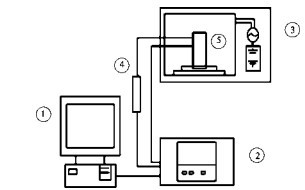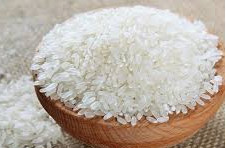Effects of different drying methods on quality control of reconstituted nutritionally fortified rice
ABSTRACT: On the basis of defining the optimum parameters of five drying processes, i.e. natural air drying, hot air drying, microwave drying equipment, electrothermal vacuum drying and freeze-drying, the effects of different drying processes on the quality of reconstituted nutrient-fortified rice were analyzed.
The results showed that the optimum technological conditions of electrothermal vacuum drying were vacuum 0.025 MPa, drying temperature 35 C and drying time 2.5 h. The cross-sectional compactness, palatability, cold rice texture and sensory evaluation were the best, and the comprehensive cooking quality and texture characteristics were the best.

Among them, heating water absorption rate 280.45%, expansion rate 268.57%, soluble solids weight of rice soup 56.657 mg/g, elasticity of rice grain 0.873 mm, cohesiveness 0.549 gs, recovery value 0.192gs; microwave power 210W, drying time 50 minutes after cooking, the appearance structure of microwave-dried rice grain is the best, hardness 3650.873 G is the smallest; temperature-90 C, drying time 24 hours of freeze-drying technology, the gel adhesion of rice grain 2788.6. 54g, chewing degree 1819.708g was the largest.
The comprehensive analysis of the effect of drying technology on the quality control of fortified rice showed that the electrothermal vacuum drying was suitable for the quality maintenance of reconstituted nutritionally fortified rice.
Key words: reconstituted nutrient fortified rice, drying method, texture characteristics, cooking quality; rice microwave drying

As a bulk grain, the richness of protein, vitamin and mineral trace elements in rice is worse than that in miscellaneous grains, and the proportion of amino acids is unreasonable. Most nutrients are stored in germ and rice bran. The higher the milling accuracy, the greater the loss of protein, inorganic salts and vitamins, the natural nutritional deficiencies in the nutritional structure of rice itself and the management of rice milling process. The loss of nutrients has a negative impact on people's health. Therefore, nutritionally fortified rice is of great significance.
At present, the methods of nutritionally fortified rice at home and abroad are mainly divided into soaking, coating and extrusion strengthening methods, but the technology and products of soaking and coating are not suitable for our national conditions. In this study, we used extrusion strengthening method to produce reconstituted nutritionally fortified rice, using crushed rice as the base material, with glutinous rice, soybean, corn, wheat and other auxiliary materials through extrusion ripening and recrystallization process to form artificial rice. Rice is aimed at improving the single nutritional structure of staple food, improving the utilization rate of grain resources and the economic benefits of grain processing enterprises.
The technological process of the reconstituted nutrient fortified rice is as follows: raw material pretreatment ingredients extrusion granulation drying cooling polishing screening and grading packaging.
Drying process is the key process control point for the production of reconstituted nutrient fortified rice, which has an important impact on the appearance and edible quality of reconstituted nutrient fortified rice. Excessive drying tends to form hard shells on the surface of reconstituted nutrient-fortified rice with low rehydration rate and poor sensory quality; insufficient drying leads to long drying time and low efficiency; at the same time, improper drying process can cause cracking on the surface of rice grains, even bursting waist, or the uneven distribution of water in the center and surface of rice grains can lead to mildew during storage and hard core after cooking, which makes the reconstituted rice nutrient strong. The quality of chemical rice products deteriorates, which affects the economic benefits of enterprises.
There are many reports on the drying methods of instant rice at home and abroad. There are many studies on the composition, production process optimization and storage stability of the reconstituted nutrient fortified rice, but few on the drying methods and methods.
Based on the preliminary research results of optimum drying conditions of different drying methods, five drying methods, natural air drying, hot air drying, microwave drying, electrothermal vacuum drying and freeze drying, were used to dry the reconstituted nutrient-fortified rice. The effects of five drying methods on the quality of reconstituted nutrient-fortified rice were studied, which provided a certain theory for the drying methods of reconstituted nutrient-fortified rice. Guidance and basis to improve the economic efficiency of enterprises.